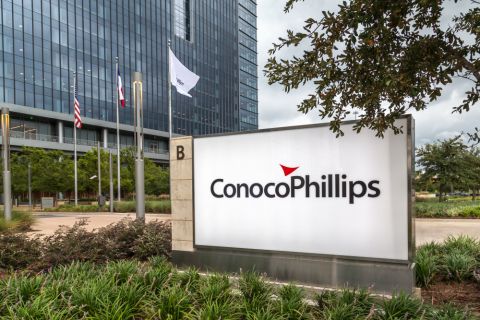In May, the Alerian MLP Infrastructure Index (AMZI) fell 7.5% on a total return basis, marking the largest one month decline for the AMZI since November 2008. Several factors contributed to May's underperformance. The two major culprits were volatility in the broader equity market and a pullback in commodity prices such as crude oil and natural gas liquids (NGLs). Top performers Oneok Partners LP and Magellan Midstream Partners LP fell only 2.1% and 2.8%, respectively. On the other end of the spectrum, lower NGL prices impacted gathering and processing master limited partnership (MLP) names such as Copano Energy LLC and MarkWest Energy Partners LP, which fell 25% and 20.3%. During the month, on a total-return basis, the S&P 500 fell 6% and the Dow Jones Industrial Average pulled back 5.8%, due to Eurozone instability and weaker U.S. job market reports.
Asset allocation
While one of the benefits of investing in MLPs is that they have roughly half the volatility of the broader markets (standard deviation of 0.49 versus the S&P 500), MLPs are not completely immune from general market trends, particularly downturns. In addition, as the MLP asset class has become more institutionalized, investors have begun to view MLPs as an asset allocation versus an alternative investment or tactical trade, as has been the case in the past.

On a trailing 12-month basis through May, the AMZI has returned 2.3% on a total return basis versus the S&P 500 of -0.4%.
In an example where institutional investors decide to cut overall equity exposure and move a higher percentage of their portfolio assets into cash, if MLPs represent a set certain percentage of the equity portfolio, then that allocation shift would cut overall MLP exposure and impact demand for MLPs and their equity values. Notably, MLP liquidity has significantly improved over the past five years, mitigating the impact of dramatic price declines when there are changes in fund flows. In 2007, daily dollar liquidity for the MLP sector was roughly $250 million versus today, as liquidity is now above $800 million.
Oil price
In addition to dismal broader market performance, MLPs were also impacted by the decline in crude oil prices, which fell more than 15%, from the beginning to the end of May, to $88 per barrel. There has been a pickup in the supply of crude. However, the pullback in prices during May was not fundamentally driven and was primarily attributable to the volatility of the Euro currency and the European economy.
While MLPs generally do not take title to the commodities they handle, they are still susceptible to the headline risk of declining crude oil prices, as MLPs are still viewed as energy equities and energy equities tend to be correlated with crude oil prices. Notably, NGL prices are generally correlated to crude oil prices as well. The decline in crude oil prices (and subsequently, NGL prices), as well as the increase in supply of liquids from liquids-rich plays such as the Eagle Ford shale, negatively impacted processing margins in May. In fact, in some areas, such as the Midcontinent, some processors have begun to reject ethane, as the margin to process ethane is negative. As a result of volatility in NGL prices, MLPs engaged in the processing of NGLs, such as Copano and MarkWest, saw a more dramatic decrease in their equity prices during May.
Investors certainly sold in May, but for those who believe in the underlying MLP story and future organic expansion opportunities, there is no reason to go away.
Maria Halmo and Emily Wang, CPA, are directors for Alerian, an independent indexing company that provides objective market information. Over $7 billion is directly tied to Alerian's indices, which include the leading bnchmark of MLP infrastructure equities: the Alerian MLP Infrastructure Index (AMZI). For more information, please visit www.alerian.com.
Recommended Reading
US Could Release More SPR Oil to Keep Gas Prices Low, Senior White House Adviser Says
2024-04-16 - White House senior adviser John Podesta stopped short of saying there would be a release from the Strategic Petroleum Reserve any time soon at an industry conference on April 16.
What's Affecting Oil Prices This Week? (April 22, 2024)
2024-04-22 - Stratas Advisors predict that despite geopolitical tensions, the oil supply will not be disrupted, even with the U.S. House of Representatives inserting sanctions on Iran’s oil exports.
ConocoPhillips CEO Ryan Lance Calls LNG Pause ‘Shortsighted’
2024-02-14 - ConocoPhillips chairman and CEO Ryan Lance called U.S. President Joe Biden’s recent decision to pause new applications for the export of American LNG “shortsighted in the short-term.”
CERAWeek: Sens. Manchin, Sullivan Say LNG Pause Needs to be Paused
2024-03-20 - U.S. Sens. Joe Manchin and Daniel Sullivan argued against the recent LNG pause announced by U.S. President Joe Biden, saying it creates doubts among allies and creates an opening for competitors as well as U.S. rival Russia.
Oil Dips as Demand Outlook Remains Uncertain
2024-02-20 - Oil prices fell on Feb. 20 with an uncertain outlook for global demand knocking value off crude futures contracts.



